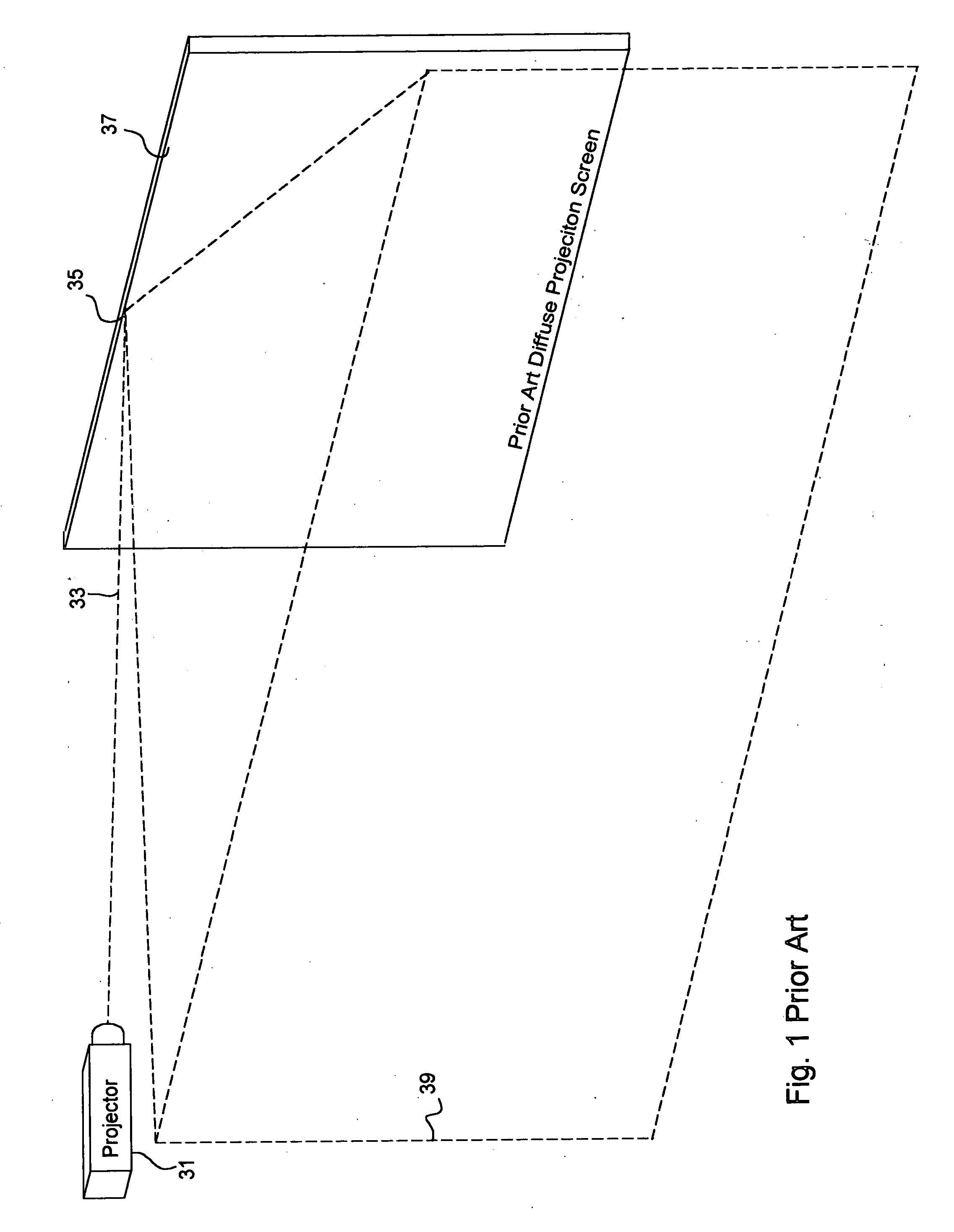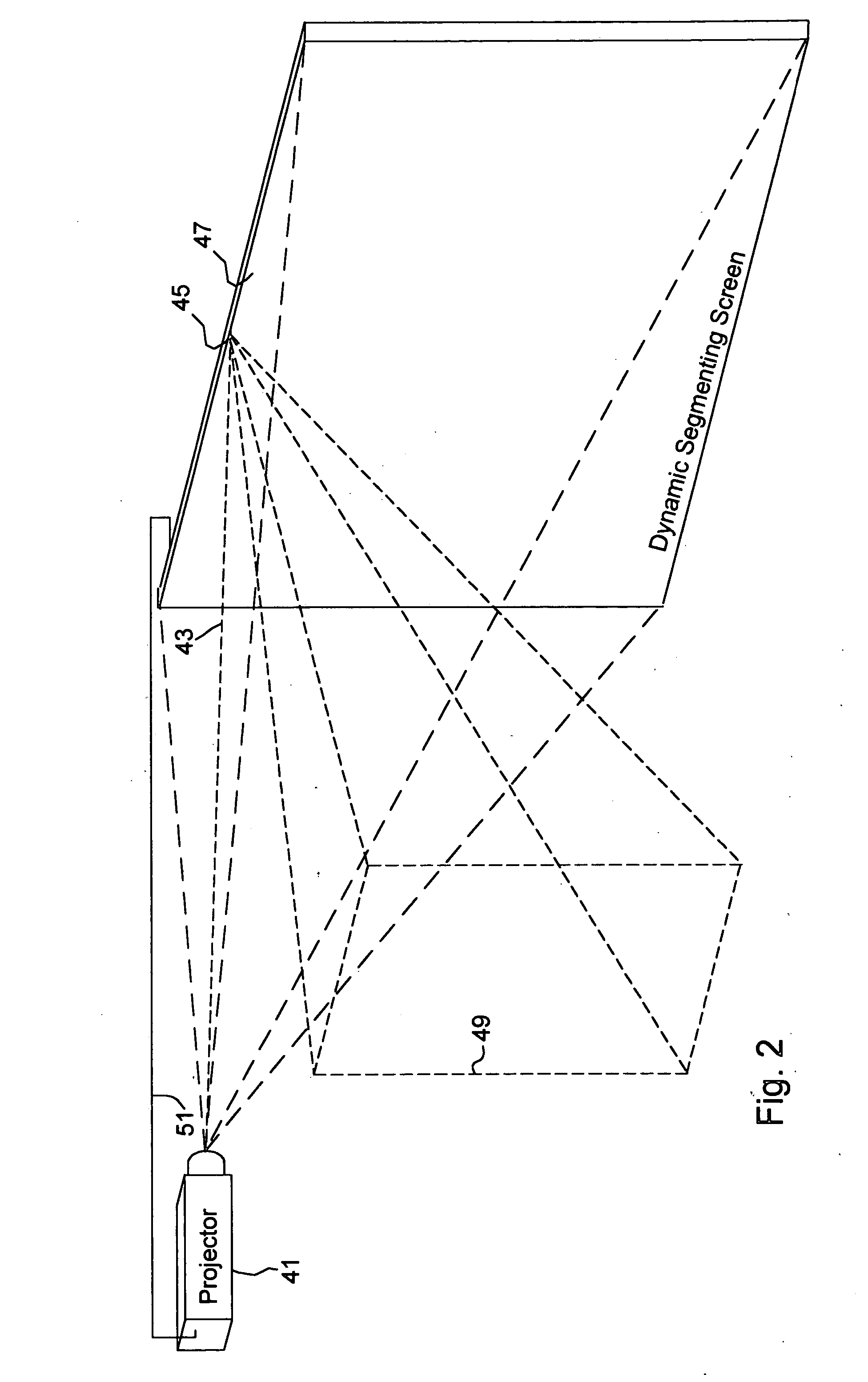Time sequenced user space segmentation for multiple program and 3D display
a user space and program technology, applied in the field of time sequenced user space segmentation for multiple program and 3d display, can solve the problem that the cost of using two monitors concurrently is further increased in the direction of pictoral communication, steroscopic system, electrical apparatus
- Summary
- Abstract
- Description
- Claims
- Application Information
AI Technical Summary
Benefits of technology
Problems solved by technology
Method used
Image
Examples
Embodiment Construction
--Solid State Beam Steering
[0033] FIG. 1 prior art illustrates a well know front projection method. A prior art image projector 31 uses standard DMD or LCD technology to project an image including an individual prior art pixel 33 which is incident upon a diffuse projection screen 37. The 33 is incident the 37 at prior art incidence point 35. The entire prior art user space 39 is able to observe light from 33 that is diffuse by 37 at point 35. Similarly, each pixel is incident upon the surface of 37 and observable in 39. This prior art architecture is not conducive to displaying full resolution multiple programs concurrently using front projection without the aid of special shutter, polarized, or other types of glasses. Similarly, this prior art architecture is not conducive to displaying stereoscopic images or true 3D full resolution images concurrently using front projection without the aid of special shutter, polarized, or other types of glasses.
[0034] FIG. 2 illustrates a front p...
PUM
 Login to View More
Login to View More Abstract
Description
Claims
Application Information
 Login to View More
Login to View More - R&D
- Intellectual Property
- Life Sciences
- Materials
- Tech Scout
- Unparalleled Data Quality
- Higher Quality Content
- 60% Fewer Hallucinations
Browse by: Latest US Patents, China's latest patents, Technical Efficacy Thesaurus, Application Domain, Technology Topic, Popular Technical Reports.
© 2025 PatSnap. All rights reserved.Legal|Privacy policy|Modern Slavery Act Transparency Statement|Sitemap|About US| Contact US: help@patsnap.com



